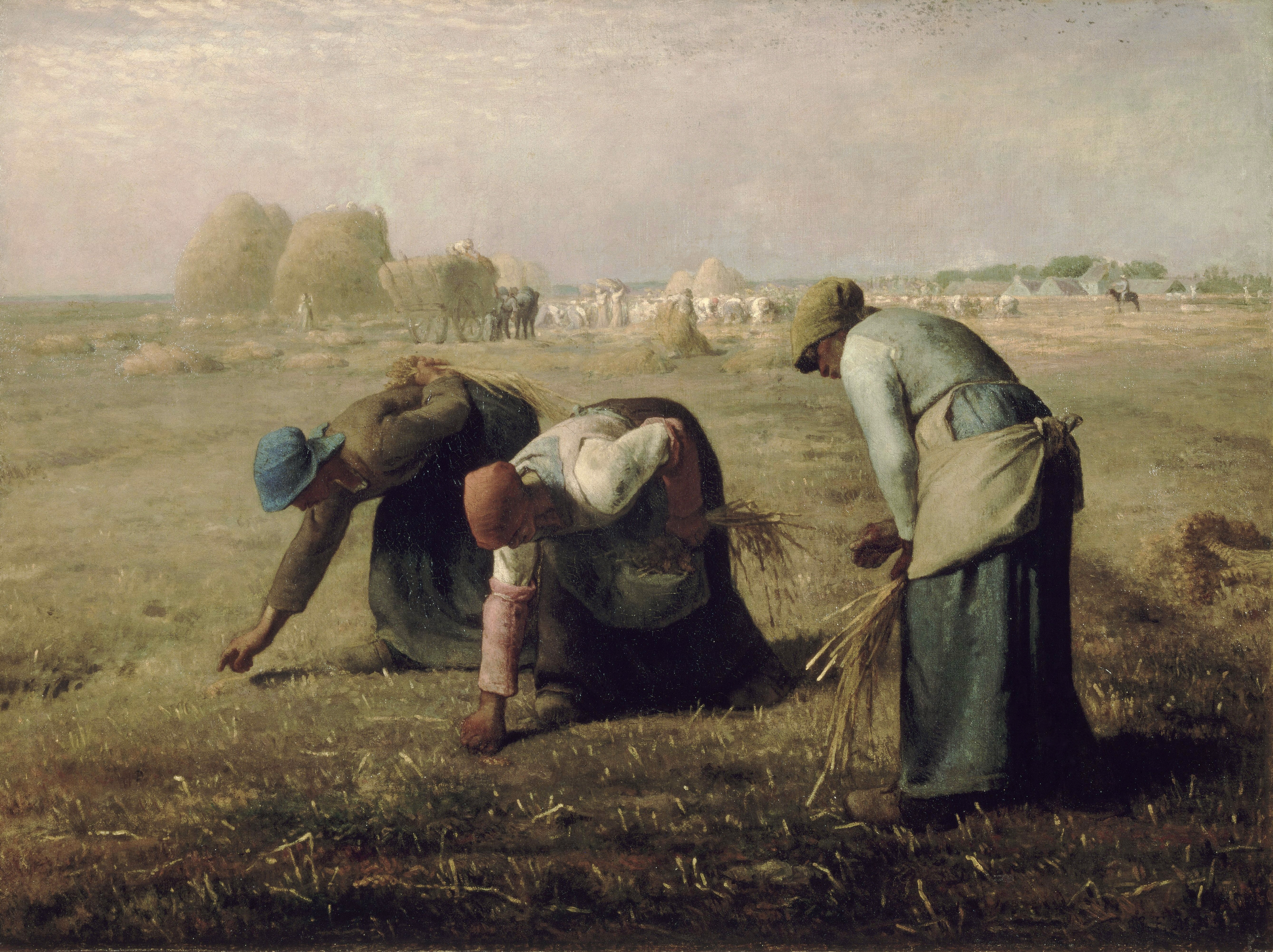 |
|
Millet, Jean-Francois. The Gleaners. 1857. Oil on canvas.
Musée D'Orsay, Paris, France.
This painting, The
Gleaners, by Jean-François Millet, depicts three peasant woman gleaning, or
gathering the leftover grains after the reapers. The painting is incredibly
realistic, as Millet’s goal was not to idealize their situation, but to show it
as it actually was (The Gleaners). The painting was not well received in
France, since it made the upper class feel “uneasy about their status” (The
Gleaners). It was received with heavy criticism and negative emotions,
including suspicion. Of course, Millet revealed this work right after the
French Revolution, which was a time of uneasiness and disturbance between the
social classes and order. As history usually goes, those things that address a
social tension do not fare so well, and was no different for The Gleaners.
What is most striking
about this painting is in fact the composition and subject matter. Rarely ever
were the common people or laborers or farmers painted with such care and
detail. As is obvious, the women are the main focus of the work. They are left
alone to do their work, even though there is a man on a horse on the right
side, who is assumedly the landowner (The Gleaners). In the background, we also
see the piles of hay, while the women are left to pick up the remains. This is
not just a day-on-the-job sort of painting. Millet is trying to show that not
only do the gleaners pick up the remains of the other workers, but that those
in poverty (the laborers, the peasants, the farmers, etc.) pick up the remains
of the wealthy. Another interesting choice of composition that Millet chose to
do is the observation that none of the women break the horizon line. They are
bent down below it, as if they are forced below it. According to Wikipedia,
Millet believed that those born a peasant would stay a peasant (The Gleaners).
Further down in the article it reads that the composition “aligns with the social structure that what
you are born into is what you stay” (The Gleaners).
While the women may not have
been farmers, they were agricultural laborers. The reason I wanted to analyze
this particular painting is because I wanted to show that farming and other
agricultural labor is not always glamourous. I wanted to show the social
injustice that was (and often still is) forced on this type of work and labor.
N.a. "The Gleaners." Wikipedia.
Wikimedia Foundation, 22 Mar. 2016. Web. 10 Apr. 2016.
|
“The ultimate goal of farming is not the growing of crops, but the cultivation and perfection of human beings.” ― Masanobu Fukuoka, The One-Straw Revolution
Sunday, April 10, 2016
Analysis on "The Gleaners" by Jean-Francois Millet
Subscribe to:
Post Comments (Atom)
No comments:
Post a Comment